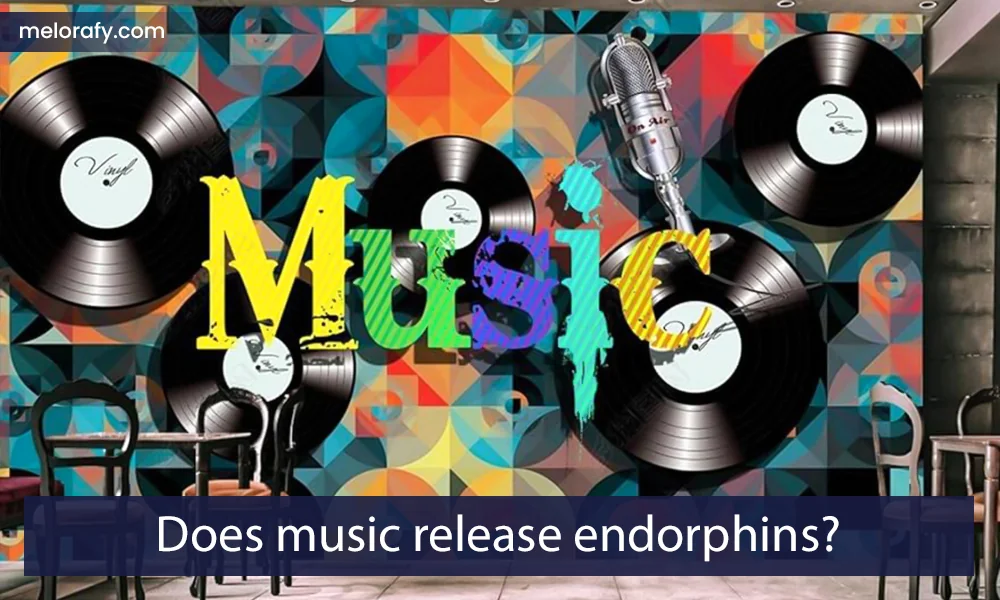
Does music release endorphins?
Music is a universal language that transcends cultural boundaries and can evoke powerful emotional responses and influence our mood and behavior. Among its many effects, there is a growing body of research showing that music has the ability to trigger the release of endorphins, the body’s natural feel-good chemicals. In this comprehensive exploration of melorafy, we delve into the science behind music’s effects on the brain, examine the mechanisms underlying endorphin release, and explore the potential implications for health and well-being.
Understanding Endorphins | Nature’s Mood Enhancers
Endorphins are neurotransmitters produced by the central nervous system and the pituitary gland. They belong to a class of chemicals known as endogenous opioids, which are naturally produced by the body and act on opioid receptors in the brain. Endorphins are often referred to as the body’s natural painkillers, as they help alleviate pain and promote feelings of pleasure and well-being.
The Science of Music and Brain Response
Numerous studies have demonstrated that music has a profound impact on the brain, eliciting a wide range of cognitive, emotional, and physiological responses. When we listen to music, multiple areas of the brain are activated, including those involved in auditory processing, emotion regulation, and reward processing. Music can evoke powerful emotions, trigger memories, and synchronize brain activity, creating a deeply immersive and pleasurable experience.
Music and Endorphin Release | The Evidence
While the precise mechanisms underlying music’s effects on endorphin release are still being elucidated, several studies have provided compelling evidence to support the connection:
![]()
Neuroimaging Studies:
Functional magnetic resonance imaging (fMRI) studies have shown that listening to music activates brain regions associated with reward processing, including the nucleus accumbens and the ventral tegmental area. These regions are known to play a key role in the release of endorphins and other neurotransmitters involved in pleasure and motivation.
Physiological Responses:
Research has also demonstrated that listening to music can lead to changes in physiological parameters associated with endorphin release, such as heart rate, blood pressure, and respiration rate. Studies have shown that listening to music can induce relaxation, reduce stress levels, and enhance mood, all of which are consistent with the effects of endorphin release.
Experimental Studies:
Experimental studies involving controlled interventions have further corroborated the link between music listening and endorphin release. For example, one study found that participants who listened to their favorite music experienced a significant increase in endorphin levels compared to those who listened to non-preferred music or no music at all.
The Role of Musical Features
The effects of music on endorphin release may be influenced by various musical features, including tempo, rhythm, melody, harmony, and lyrics. For example:
- Tempo: Upbeat and rhythmic music with a fast tempo is often associated with feelings of energy and excitement, which may enhance endorphin release.
- Rhythm: Syncopated rhythms and percussive elements can create a sense of anticipation and arousal, stimulating the release of endorphins and other neurotransmitters.
- Melody: Melodic elements that evoke strong emotional responses, such as soaring melodies or melancholic harmonies, may amplify the effects of endorphin release.
- Lyrics: The emotional content of lyrics can also influence endorphin release, with emotionally resonant or uplifting lyrics enhancing the overall listening experience.
Practical Implications and Applications
The potential of music to stimulate endorphin release has important implications for health and well-being:
![]()
- Stress Reduction: Music therapy has been used as a complementary approach to stress reduction and relaxation, helping individuals cope with anxiety, depression, and chronic pain.
- Pain Management: Music has been shown to be effective in reducing perceived pain intensity and opioid consumption in clinical settings, making it a valuable tool for pain management.
- Mood Enhancement: Listening to music can enhance mood and promote emotional well-being, providing a natural and accessible means of self-care and emotional regulation.
Harnessing the Power of Music for Health and Happiness
In conclusion, the evidence suggests that music has the potential to stimulate the release of endorphins, the body’s natural feel-good chemicals. Through its ability to engage multiple brain regions, evoke powerful emotions, and modulate physiological responses, music offers a unique pathway to health and happiness. By incorporating music into our daily lives, whether through active listening, singing, playing instruments, or engaging in music therapy, we can tap into its transformative power and unlock a wealth of benefits for our mental, emotional, and physical well-being. As we continue to unravel the mysteries of music’s effects on the brain, the journey promises to be one of discovery, inspiration, and endless possibilities for personal growth and healing.